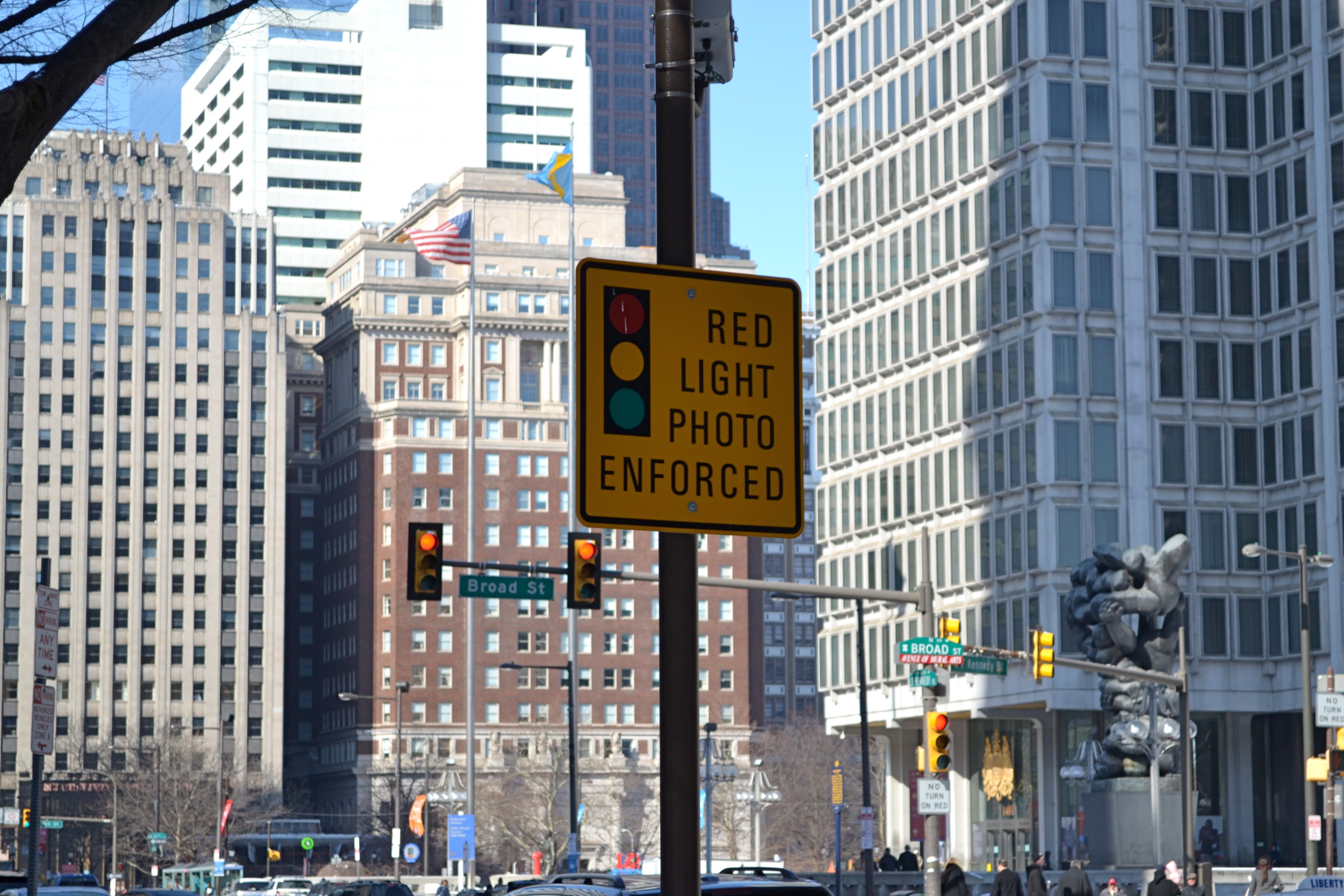Philadelphia to get nearly $5 million in ARLE funds

Philadelphia is slated to receive nearly $5 million thanks to the most recent round of Automated Red Light Enforcement (ARLE) Funding Program grants. Since 2010, the program has awarded $33.3 million to 234 safety projects statewide.
The ARLE program distributes funds generated by automated red light cameras, which issue tickets for traffic violations such as running red lights. Though Philadelphia was the first municipality in the state to use the cameras, the funds collected are directed to a statewide funding pool in order to take away any incentive other than just making the intersections safer.
In the latest round of ARLE funding, municipalities submitted 131 applications for approximately $22.8. million. Thirty-two projects in 24 municipalities were selected and awarded $8.8 million. In Philadelphia, five projects are slated to receive a total of $4,950,000.
According to the Philadelphia Streets Department, the money will be spent in the following ways:
$1.4 million to make safety and mobility improvements at 11 intersections on Castor Avenue from Cottman Ave. to Bustleton Ave. This is part of a $3.2 million traffic signal upgrade that will design and construct 13 traffic signal controllers and 170 fully electronic traffic controllers. The new traffic signals will be connected with approximately 18,000 feet of fiber-optic cable, which will link them to the City’s Traffic Operations Center. New ADA ramps will also be installed at each of the project’s intersections.
$1.2 million to upgrade and improve pedestrian safety at Broad Street intersections between Chestnut and Walnut Streets. The Streets Department plans to replace the brick crosswalk at two signalized intersections with pavement matching the existing, adjacent pavement sections. Streets will also upgrade pavement markings at crosswalks and increase the distance between vehicle stop bars and crosswalks to improve pedestrian visibility.
“These two intersections have large pedestrian counts, and the Streets Department has had numerous requests to upgrade the ADA facilities,” Chief Lighting and Traffic Engineer Richard Montanez said in an email.
$1 million to implement a traffic-calming program to improve pedestrian safety throughout the city. The Streets Department will use recommendations from the PennDOT Traffic Calming Handbook to reduce vehicle speeds at 15 to 25 residential locations. The City is still collecting the data that will help determine where the traffic calming measures should be implemented.
$850,000 to develop a routine street-light improvement program by upgrading to LED technology. The Streets Department will use this funding to “increase pedestrian safety with better lighting while promoting walkability in commercial and residential corridors.” In turn, Montanez said, walkability after dark helps create a sense of place and boost pride in community. The work will begin with a pilot area in Center City.
The LED lights provide the added benefits of improved energy efficiency and light quality and reduced maintenance requirements.
$500,000 to improve safety by updating to anti-skid pavement surfaces on School House Lane and Kelly Drive. These roadways are especially prone to wet-weather crashes given their geometric constraints. In response, the Streets Department will add anti-skid pavement surfaces.
Walkability
All of these projects are part of a larger effort to address walkability and safety and are inspired by the City’s “Complete Streets” policy, Montanez said.
“Walkability is one of Philadelphia’s greatest assets,” he said. “Its intimate network of small blocks and interesting streetscapes is fueling the City’s revival. At some point everyone is a pedestrian, and we are making a conscious and concerted effort to preserve and enhance the City’s walkability.”
ARLE funded bike marking improvements
In addition to the five projects detailed above, the City was awarded $1.5 million through the ARLE funding program in April 2013. That funding was for low-cost safety improvements at various locations, and the Mayor’s Office of Transportation and Utilities (MOTU) recently reported that a portion of those funds will go toward improving pavement markings within bicycle conflict zones at 34 intersections and over approximately seven miles of bicycle lanes.
By the end of summer 2014, the project will introduce “sharrow” markings to 150 blocks of streets and will refresh worn bike lanes. The first markings will appear this spring on Columbus Boulevard, from Race to Spring Garden streets, and at the intersection of Spring Garden and Pennsylvania Avenue.
WHYY is your source for fact-based, in-depth journalism and information. As a nonprofit organization, we rely on financial support from readers like you. Please give today.



